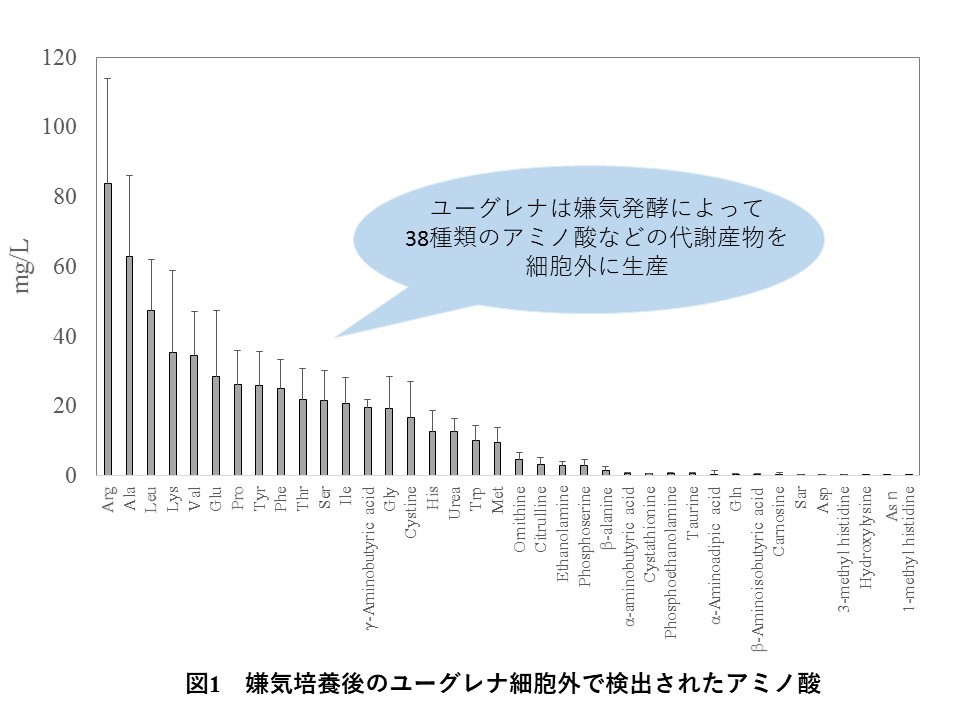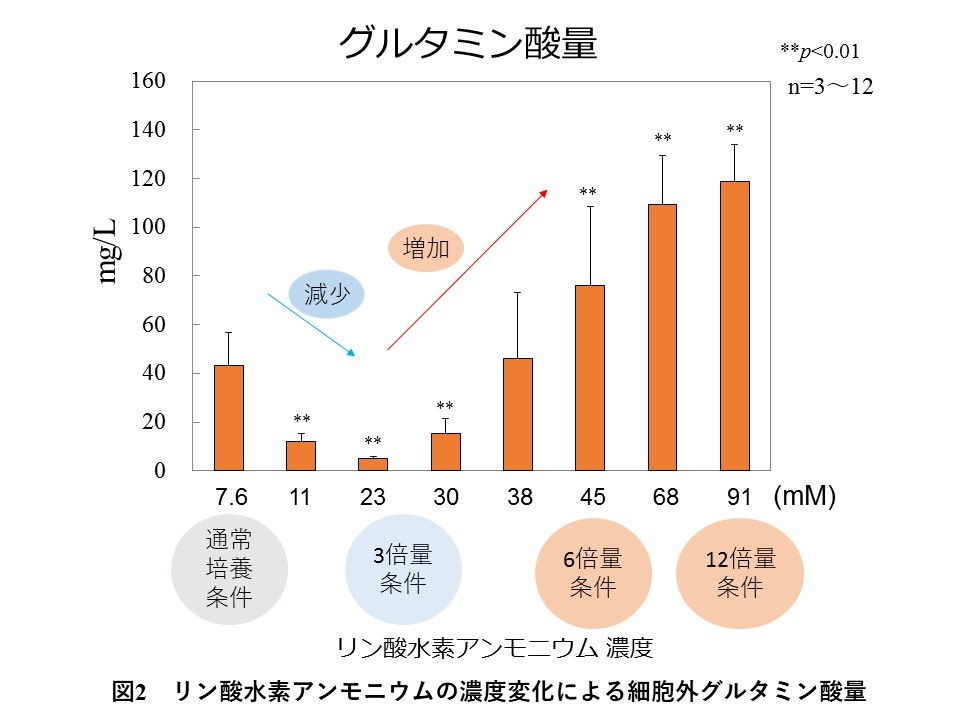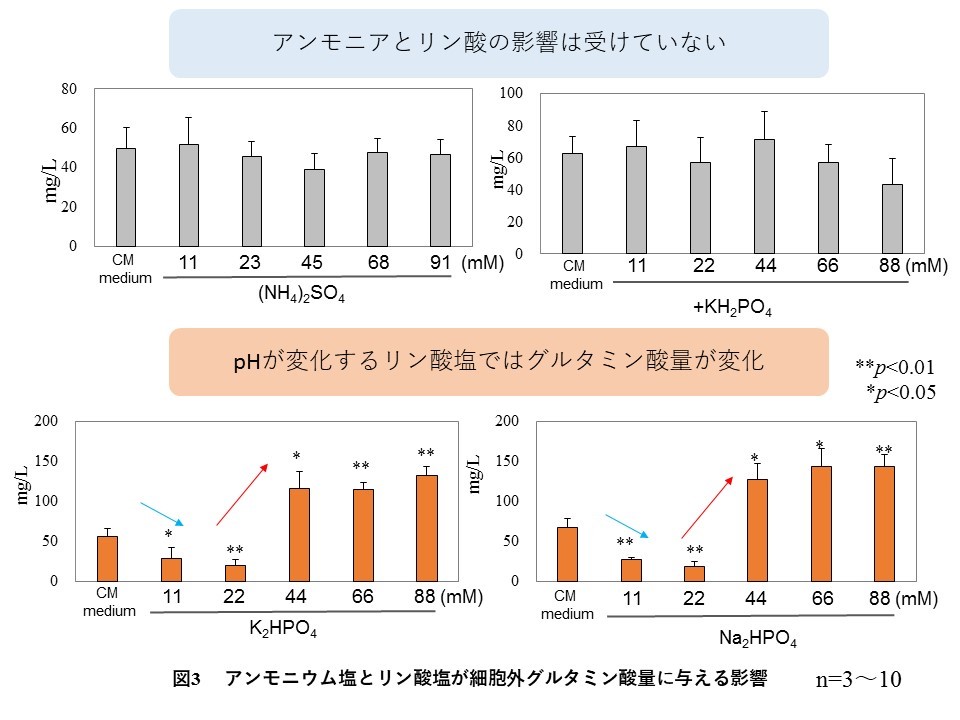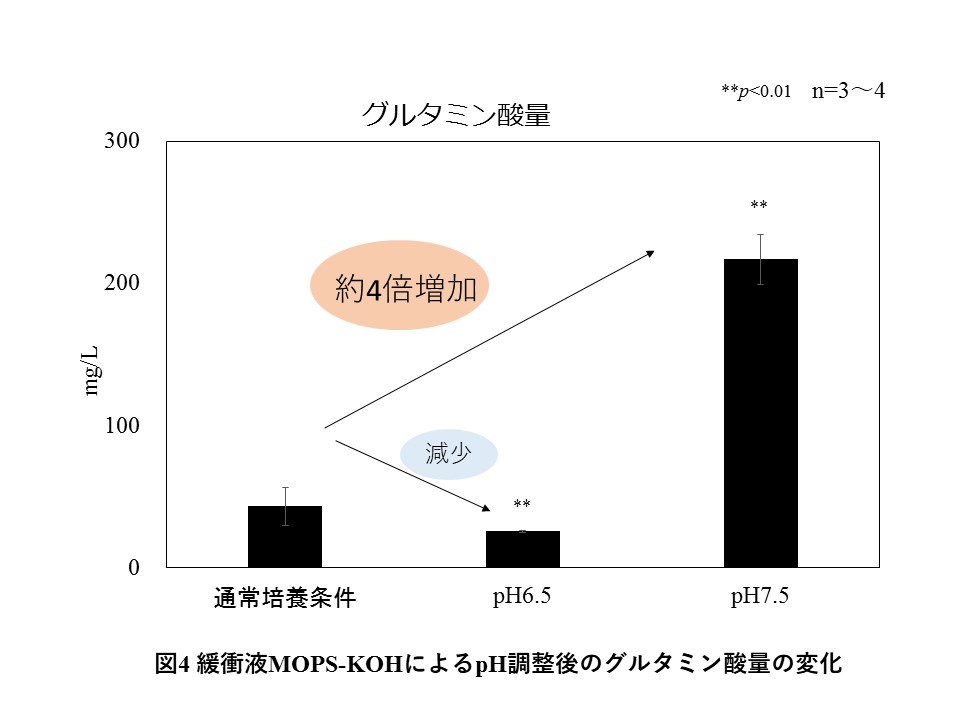Press Releases
* Please note that the news release contains the content at the time of the announcement and may differ from the latest information.
Suggests the possibility of amino acid production utilizing photosynthesis of Euglena
Research results of Environmental Biotechnology Laboratory, Graduate School of Agriculture, Meiji University and Our
Euglena Co., Ltd.
Meiji University
- Takashi Koyamauchi (Associate Professor) and Fuyuko Tomita (2nd year master's program) of the Environmental Biotechnology Laboratory of the Graduate School of Agriculture, Meiji University, and Kengo Suzuki of Euglena Co., Ltd. (Head Office: Minato-ku, Tokyo, President & CEO: Mitsuru Izumo, hereinafter referred to as "Euglena") The research group in charge of Executive Officer research and development is Euglena microalgae (Japanese name: Astragalus, hereinafter referred to as "Euglena"). When fermented, more than 30 kinds of compounds such as amino acids are released outside the cell.
- Among the compounds released extracellularly, the production of glutamic acid, which is widely used in industry, was found to be controlled by the pH during fermentation.
- The amino acid produced this time is synthesized intracellularly using CO2 as a carbon source, suggesting the possibility of environmentally friendly amino acid production using Euglena
―Summary―
Associate Professor Takashi Osanai of the Faculty of Agriculture, Meiji University and Euglena Euglena cultured under fermentation conditions (dark / anaerobic conditions Note 1)) releases various amino acids extracellularly. Especially for glutamic acid, it was clarified that the pH of fermentation conditions has a great influence on the production amount.
Amino acids are known as metabolites that make up proteins, and also play important roles in intracellular metabolism and environmental responses. Industrially, it is expected to be used in a wide range of fields such as food additives as a taste ingredient and nutritional supplements for feed, including use in chemicals that utilize pharmacological functions. In particular, glutamic acid is one of the largest amino acids on the market, and 3.3 million tons are produced annually by fermentation. The main industrial production method for amino acids is fermentation, and the main production strains used are heterotrophic organisms that require carbon sources such as sugar to grow corynebacterium, Escherichia coli, and yeast. However, in fermentation methods using these organisms, the cost ratio of the sugar source used during production is high, so a carbon source that can replace sugar is desired.
Euglena used in this study grows by photosynthesis in the same way as plants. In addition, since CO2, which is one of the greenhouse gases, is absorbed by photosynthesis during growth, it is thought that the production of substances using microalgae such as Euglena
In this research group, Euglena grown by photosynthesis releases amino acids extracellularly when it is transferred under fermentation conditions (dark / anaerobic conditions). Amino acid production was changed by changing the concentration of ammonium hydrogen phosphate, which is a component of the medium, during fermentation. Among the amino acids, it was found that the production of glutamic acid is controlled by the pH under fermentation conditions. In this way, in this research, we have developed an amino acid production technology based on Euglena In the future, the development of substance production using photosynthetic organisms can be expected to promote a sustainable sound material-cycle society, such as contributing to the reduction of greenhouse gases, which is one of the environmental problems.
This research was carried out by Yuko Tomita, Takeya Takeya and others (both in the second year of the master's program) at the Graduate School of Agriculture, Meiji University, and was conducted in collaboration with the research group of Euglena Co., Ltd. Kengo Suzuki, Executive Officer in charge of research and development. .. In addition, this research is conducted by JST Strategic Creative Research Promotion Project Advanced Low Carbon Technology Development ALCA (Representative Takashi Koyamauchi) and JSPS Research Fund New Academic Area Research "New Photosynthesis" (Professor Jun Minagawa, Area Representative Basic Biology Research Institute) It was carried out with the support of Professor Hiroshi Shimizu of Osaka University, the representative of the planning group. This research result was published in the scientific journal "Algal Research" published on December 4, 2018 (Tuesday).
* Research group
Environmental Biotechnology Laboratory, Graduate School of Agriculture, Meiji University
Associate Professor Takashi Koyamauchi
2nd year master's program Yuko Tomita
2nd year master's program Masahiro Takeya
Euglena Co., Ltd.
Executive Officer in charge of Research and Development Kengo Suzuki
Researcher Yuka Hashimoto (Yuka Hashimoto)
Researcher Nobuko Nitta
Researcher Chieko Higuchi
1: Background
Euglena is a type of unicellular eukaryotic microalgae that proliferates by photosynthesis. On the other hand, it is an organism that has both plant and animal properties, such as showing spontaneous motility by flagella. It is known that during growth, it absorbs CO2 by photosynthesis and fixes stored polysaccharides such as paramylon Note 2), amino acids, and organic acids as carbon sources.
In this research group, we conducted research using Euglena gracilis (Euglena), which is the most actively researched in Euglena. Euglena is known to release organic acids such as succinic acid and lactic acid, which are raw materials for bioplastics, to the outside of cells by culturing under fermentation conditions (anaerobic / dark conditions). In addition, Euglena is one of the microalgaes that are expected to be put to practical use in various fields because Euglena has made it possible to cultivate in large quantities outdoors.
2: Research methods and results
Euglena was cultured under bright and aerobic conditions and then transferred to fermentation conditions, as many as 38 types of amino acids and other metabolites were detected extracellularly (Fig. 1). The most abundant amino acids detected, arginine and alanine, were produced at 50 mg / L or more per culture medium, followed by leucine, lysine and valine at 30-50 mg / L per culture medium.

In this study, the concentration of ammonium hydrogen phosphate in the medium was changed to examine the effect of changes in fermentation conditions on amino acid production. The amount of extracellular amino acid produced after anaerobic culture changed variously, and in particular, the amount of glutamic acid increased or decreased depending on the concentration of ammonium hydrogen phosphate. Glutamic acid production was suppressed when the amount was added up to 3 times the normal culture condition, while glutamic acid production was promoted when the concentration was 6 times or more the normal culture condition (Fig. 2).

Next, we investigated why the addition of ammonium hydrogen phosphate changed the amount of glutamic acid produced. When various ammonium salts and phosphates were added instead of ammonium hydrogen phosphate, glutamic acid production did not change with ammonium sulfate (upper part of Fig. 3). On the other hand, with phosphate, the amount of glutamate changed with the addition of dipotassium hydrogen phosphate or disodium hydrogen phosphate, but not with potassium dihydrogen phosphate (bottom of Figure 3).

From these facts, it was considered that the change in glutamate production due to the addition of ammonium hydrogen phosphate may be due to pH change due to hydrogen phosphate ion, not ammonia or phosphoric acid.
When the pH change of the medium due to the addition of ammonium hydrogen phosphate was examined, the pH when the amount of glutamic acid decreased was 6.5, and the pH when the amount of glutamic acid increased was 7.5. Euglena was fermented by using a buffer solution to keep the pH constant. As a result, the amount of glutamate decreased at pH 6.5 and increased at pH 7.5 (Fig. 4). From this, it was found that the Euglena is controlled by the pH, and by maintaining the pH at 7 or higher, the production is more than 4 times that under the normal culture conditions.

3: Future expectations
In this study, Euglena released various amino acids extracellularly under fermentation conditions, and it was revealed that the production of glutamic acid depends on pH. In the future, it is expected that the production of other amino acids will increase and the mechanism of amino acid production will be elucidated.
4: Treatise information
<Article title> Amino Acid Excretion from Euglena gracilis Cells in Dark and Anaerobic Conditions
<Japanese title> Euglena gracilis releases amino acids under dark and anaerobic conditions
<Author name> Yuko Tomita, Masahiro Takeya, Kengo Suzuki, Nobuko Nitta, Chieko Higuchi, Yuka Marukawa-Hashimoto, Takashi Osanai
<Magazine name> Algal Research
5: Supplementary explanation
Note 1) Fermentation conditions (dark / anaerobic conditions)
Culture conditions in which the oxygen concentration is as low as possible by sealing. Euglena, generate oxygen by photosynthesis in the presence of light, so they maintain an anaerobic state under dark conditions.
Note 2) Paramylon
Polysaccharide polymerized by 1,3-bond of glucose. Euglena accumulates a carbon source assimilated by photosynthesis as the stored polysaccharide paramylon.
-Contact for inquiries from the press-
Euglena Co., Ltd. Corporate Communication Division
Public Relations Division, Meiji University
